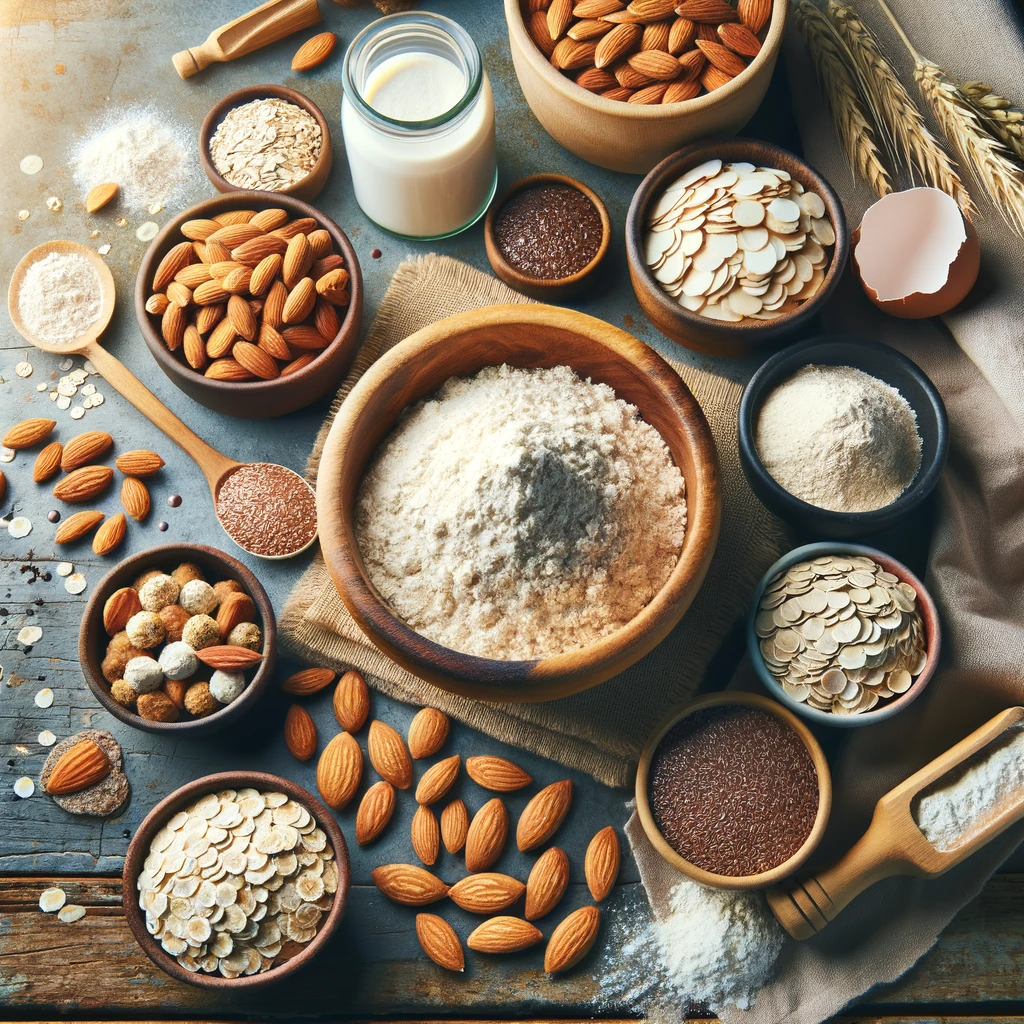Introduction: In recent years, the demand for gluten-free baking has surged, driven by a growing awareness of gluten sensitivities and the desire for healthier alternatives. Gluten-free baking allows individuals with gluten intolerances or celiac disease to enjoy delicious baked goods without the discomfort. In this article, we will delve into the world of gluten-free baking and highlight some essential ingredients that can help you create mouthwatering treats while prioritizing your health.
- Almond Flour: One of the most versatile gluten-free ingredients for baking is almond flour. Made from finely ground almonds, it adds a subtle nutty flavor and a moist texture to your baked goods. Almond flour is a great source of protein, healthy fats, and vitamins, making it a popular choice for those looking to boost their nutritional intake.
- Coconut Flour: Coconut flour is another fantastic gluten-free option. Derived from dried coconut meat, it offers a mild coconut flavor and a delightful crumbly texture to your recipes. It’s high in fiber, low in carbs, and rich in essential nutrients, making it an excellent choice for those seeking a healthy alternative to traditional flour.
- Oat Flour: Oat flour, made by grinding oats, is a gluten-free ingredient that imparts a wholesome flavor to your baked goods. It’s high in fiber and provides a natural sweetness, making it perfect for cookies, muffins, and pancakes. Ensure you choose certified gluten-free oats to avoid cross-contamination.
- Tapioca Flour: Tapioca flour, derived from the cassava root, is a popular thickening agent in gluten-free baking. It enhances the texture of your baked treats, making them light and fluffy. Tapioca flour is also easily digestible, making it a suitable option for individuals with sensitive stomachs.
- Psyllium Husk: Psyllium husk is a lesser-known but essential ingredient in gluten-free baking. It acts as a binding agent and helps improve the structure of your bread and muffins. Additionally, it’s rich in dietary fiber, promoting digestive health and satiety.
- Flaxseed Meal: Flaxseed meal is an excellent egg substitute in gluten-free recipes. It adds a nutty flavor and provides omega-3 fatty acids, fiber, and antioxidants. To replace one egg, simply mix one tablespoon of flaxseed meal with three tablespoons of water, and let it sit for a few minutes until it thickens.
- Rice Flour: Rice flour is a staple in gluten-free baking. It is milder in flavor and works well in a wide range of recipes, from cakes to bread. Brown rice flour, in particular, offers added nutritional benefits due to its higher fiber content.
- Potato Starch: Potato starch is perfect for achieving a tender crumb in your baked goods. It’s a neutral-tasting ingredient that complements both sweet and savory recipes. Potato starch is naturally gluten-free and can help improve the texture of your baked treats.
Conclusion: Embracing gluten-free ingredients in your baking not only accommodates dietary restrictions but also enhances the nutritional value of your favorite treats. Whether you’re dealing with gluten sensitivity or simply looking for healthier options, incorporating these gluten-free ingredients into your recipes will elevate your baking game while promoting your overall well-being. Experiment, enjoy, and savor the delicious world of gluten-free baking!
